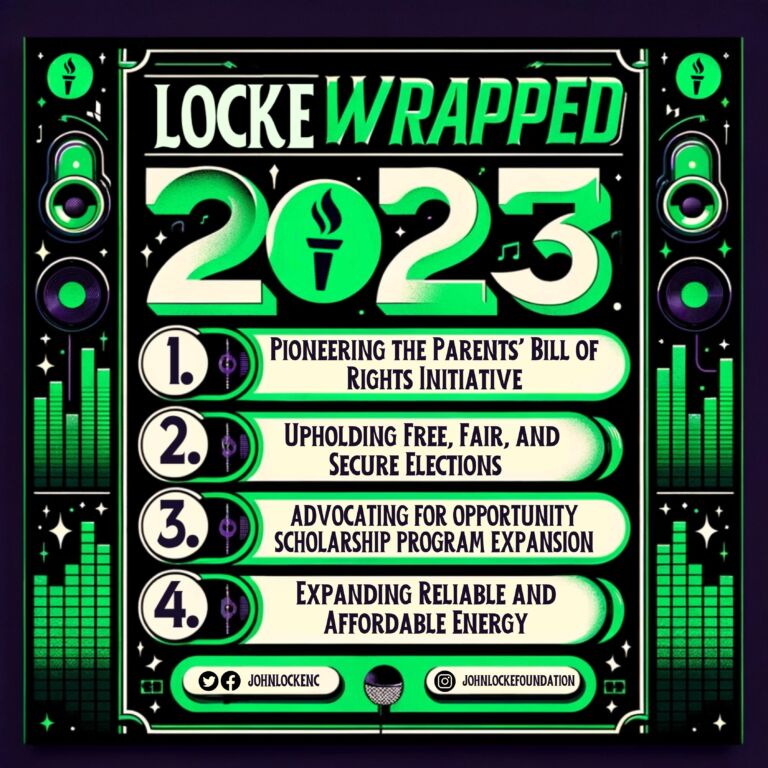In 2013, as the Republican-led General Assembly reduced taxes, cut red tape, and reformed the state’s overly generous unemployment benefits. Although these were all empirically sound policies, the editors of The News & Observer predicted disaster.
They were so confident, they offered to give Republicans credit if the state’s economy was “thriving.” To understand the seriousness of this bet, it’d be like Donald Trump offering to give up his Twitter account.
Here’s what they wrote on August 22, 2013:
Perhaps years hence, North Carolina will be thriving economically, and credit will belong to these stout Republicans who persevered in their faith that Keynesian economics is wrong, that Obamacare is evil, that unemployment assistance fosters unemployment and that, on the third or fourth try, trickle-down tax cuts for the rich really will trickle down to everyone else.
In these “years hence” we’ve seen a combination of state spending not exceeding available funds (the editors were upset about that, too) and revenue collections coming in greater than expected:
- 2014-15: $447 million surplus
- 2015-16: $430 million surplus
- 2016-17: $581 million surplus
- 2017-18: $440 million surplus
- 2018-19: $897 million surplus
CNBC’s annual “Top States for Business” study for 2019 ranked North Carolina 3rd overall, and No. 1 in the nation for economy, adding that “No state’s economy is on more solid ground than the Tar Heel State.”
Forbes reported that “North Carolina Leads the Way” as the nation’s best state for business, noting that, “North Carolina’s labor, energy and tax costs are all well below the national average and rank as the second lowest in the U.S. overall, per Moody’s Analytics. The 3% corporate tax rate is the lowest in the country.”
Chief Executive magazine ranked North Carolina fourth overall in the nation in their rankings of “Best States for Doing Business,” and third in the Southeast, behind only Florida and Tennessee, two states without personal income taxes.
The Tax Foundation highlighted North Carolina’s reforms as offering good lessons to other states, in a research paper entitled “Help from Our Friends: What States Can Learn from Tax Reform Experiences across the Country.” The Tax Foundation contrasted North Carolina’s reforms with poorly conceived tax cuts in Kansas.
For these reasons, the N&O editors have found themselves casting far and wide for a reason not to own up to their own conditional.
‘What drives state economies is state spending.’

This weekend, oh joy, they found one. They wrote an editorial actually entitled “The verdict is in on NC’s tax cuts. They’re not working.” In it they quote from Michael Mazerov, senior fellow with the Center on Budget and Policy Priorities, who reframes North Carolina’s troublesome good economic returns this way for them.
North Carolina’s increase in GDP (27.2 percent, higher than the national average) was less than Georgia, South Carolina, and Tennessee’s. North Carolina’s increase in private sector job growth (13.9 percent, higher than the national average) didn’t outpace Georgia and South Carolina’s.
Voilà! Failure!
No kidding, they actually set the standard of not outpacing every other state as proof of economic reforms not working at all. That’s the basis for the “verdict” that the reforms are “not working.”
What, pray tell, would work better?
What drives state economies, he said, is state spending on education, transportation and amenities such as parks.
Mazerov said, “States are shooting themselves in the foot when they cut taxes and cut back on investments in these crucial building blocks of the state economy.”
What drives state economies is state spending. Bully to the editors for finding someone else with their conception of how to grow an economy. See above for a visual representation.
But still. Spending on state parks drives state economies? Education and transportation are important features, yes, but the reason isn’t the spending per se; it’s the outcomes (having a skilled workforce and having a good transportation system).
Skilled labor and good transportation did feature in research into what CEOs find most important to North Carolina’s business climate. Number 1 was having a skilled workforce, with numbers 5 (community colleges), 9 (four-year universities), and 13 (workforce training programs) related to that. Number 7 was highways, and number 14 was airports. Parks didn’t rate.
Guess what Numbers 2, 3, 4, and 6 were?
- 2: a low state regulatory burden
- 3: a low state corporate tax rate
- 4: a low local property tax rate
- 6: a low personal income tax rate
Do those things sound familiar?


